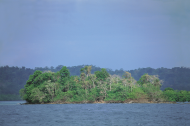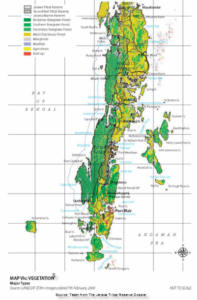The latest issue of Frontline, 'Nicobar Nightmare' (January 27, 2023), has covered the mega-infra project on
Great Nicobar Island. This is a very comprehensive cover package of seven stories that brings together for the first time the diverse issues that need to be looked into but are being ignored. Please find links to the series below.
Proposed infrastructure project in Great Nicobar Island a mega folly
by Pankaj Sekhsaria
Great Nicobar development projects disregard risk in earthquake-prone area
by Janki Andharia, V. Ramesh and Ravinder Dhiman
Flora and fauna of Great Nicobar in great peril
by Ishika Ramakrishna
Great Nicobar: Whose land is it?
by Ajay Saini
Should the leatherback turtle go to court?
by Shrishtee Bajpai
by Ajay Kumar Singh
‘Limited intervention was in the best interest of the islands’
Ritwick Dutta; Interview with the environmental
lawyer, activist, author, and co-founder of advocacy group LIFE.
Kalpavriksh is involved in education, research, policy advocacy and legal interventions in matters related to the environment and indigenous peoples of the A&N Islands. Kalpavriksh was a co-petitioner in a case that finally went to the Supreme Court. A landmark set of orders were then passed in 2002 to protect the forests and tribal peoples of the islands. The organisation has also been involved in environment education in the islands as part of a collaborative initiative with the A&N administration and other NGOs.
The Andaman and Nicobar Islands are the largest archipelago system in the Bay of Bengal, consisting of 306 islands and 206 rocks and rocky outcrops, and covering a total area of about 8200 sq. kms. Only 38 of these islands are inhabited; 11 in the Andaman group and 13 in the Nicobars. This large archipelago is separated from mainland India by about 1000 km. The nearest landmass in the north is Myanmar, roughly 280 km from Landfall Island, the northern most island in the group. The closest landmass to Great Nicobar in the south is Sumatra, which is located at a distance of 145 km.
The islands of the archipelago lie in a crescent that stretches from Cape Negrais of Myanmar to the Banda Arc of Sumatra (Indonesia). The Andamans are considered to be the extensions of the submerged Arakan Yoma mountain range of Myanmar, while the Mentawei Island to the south and south-west of Sumatra are presumed to be a southern continuation of the Nicobars.
The Great Andaman group of islands is made up of North, Middle and South Andaman Islands, with Baratang Island situated between Middle and South Andaman Islands. Ritchie's Archipelago is a group of islands located to the east of Middle Andaman while the Labyrinth group of islands is situated south west of South Andaman. 90% of the total land area of 6408 sq km of the Andaman group is constituted of reserve forests and protected areas. 36% of this land is designated at tribal reserve. Narcondum and Barren are the two islands here which are of volcanic origin. The former is supposed to be extinct, while the latter is still active.
The Nicobar group is spread over an area of 1841 sq. km of which 1542 are forests. The Nicobars are separated from the Andamans by the 10 degree channel, a wide gap of 160 km. This group consists of 24 islands in three distinct clusters. The northern group consists of Car Nicobar and Batti Malv; the central or the Nancowry group consists of Tillangchong, Chowra, Teressa, Bompoka, Trinkat, Kamorta, Katchal and Nancowry, and the southern group which consists of the two large islands of Little and Great Nicobar together with Pigeon, Megapode, Kondul, Pilo Milo, Menchal, Teris, Trak and Meroe Islands. The entire Nicobars has been declared a tribal reserve.
The islands are situated in the equatorial belt, are exposed to marine influences and have a tropical climate, which is warm, moist and equitable. The temperature ranges from 18 degree c to 35 degree C and the islands receive rains from both, the North East and the South West monsoons. Average annual rainfall varies ranges from 3,000 to 3,500 mm and humidity varies from 66% to 85%.


